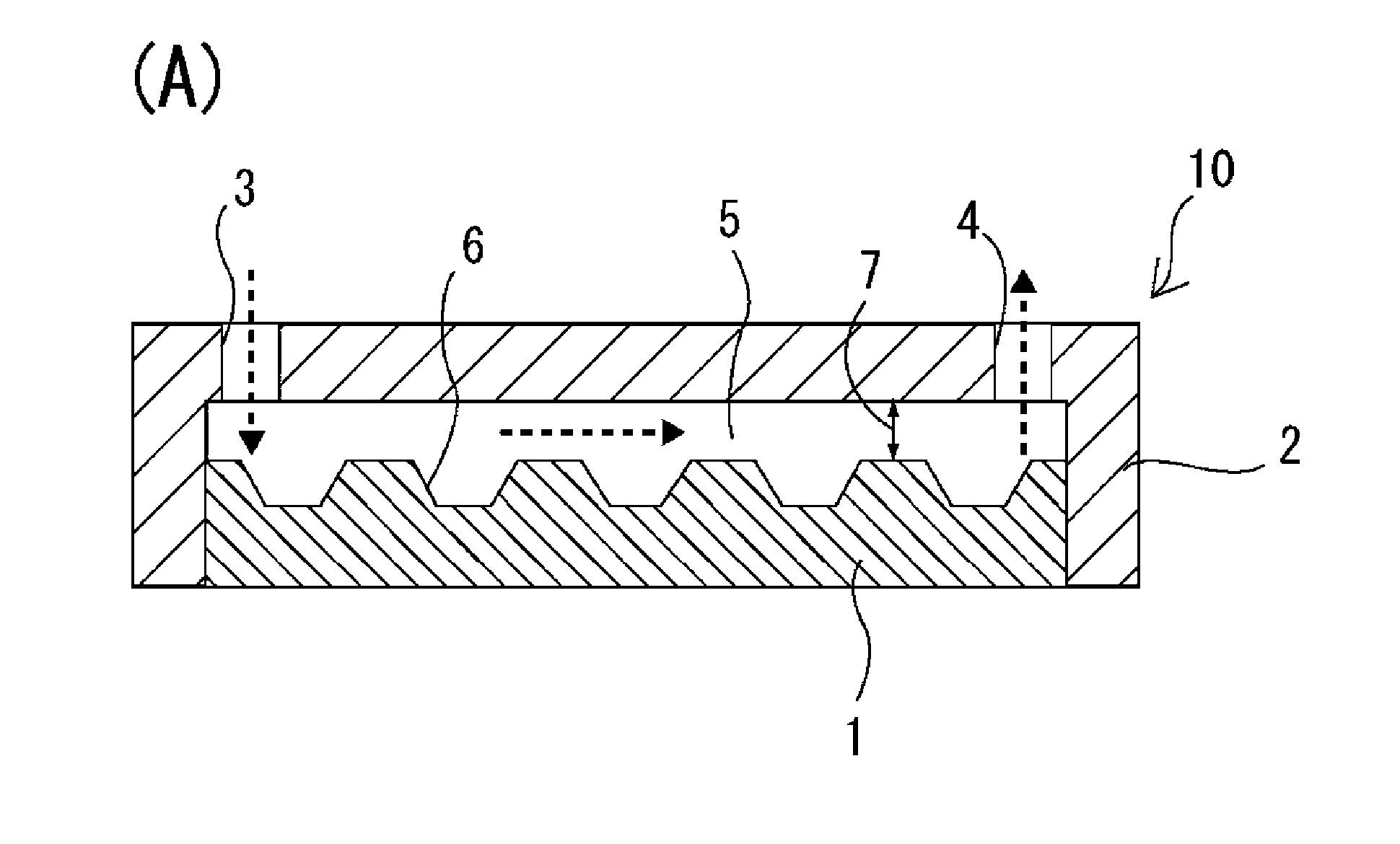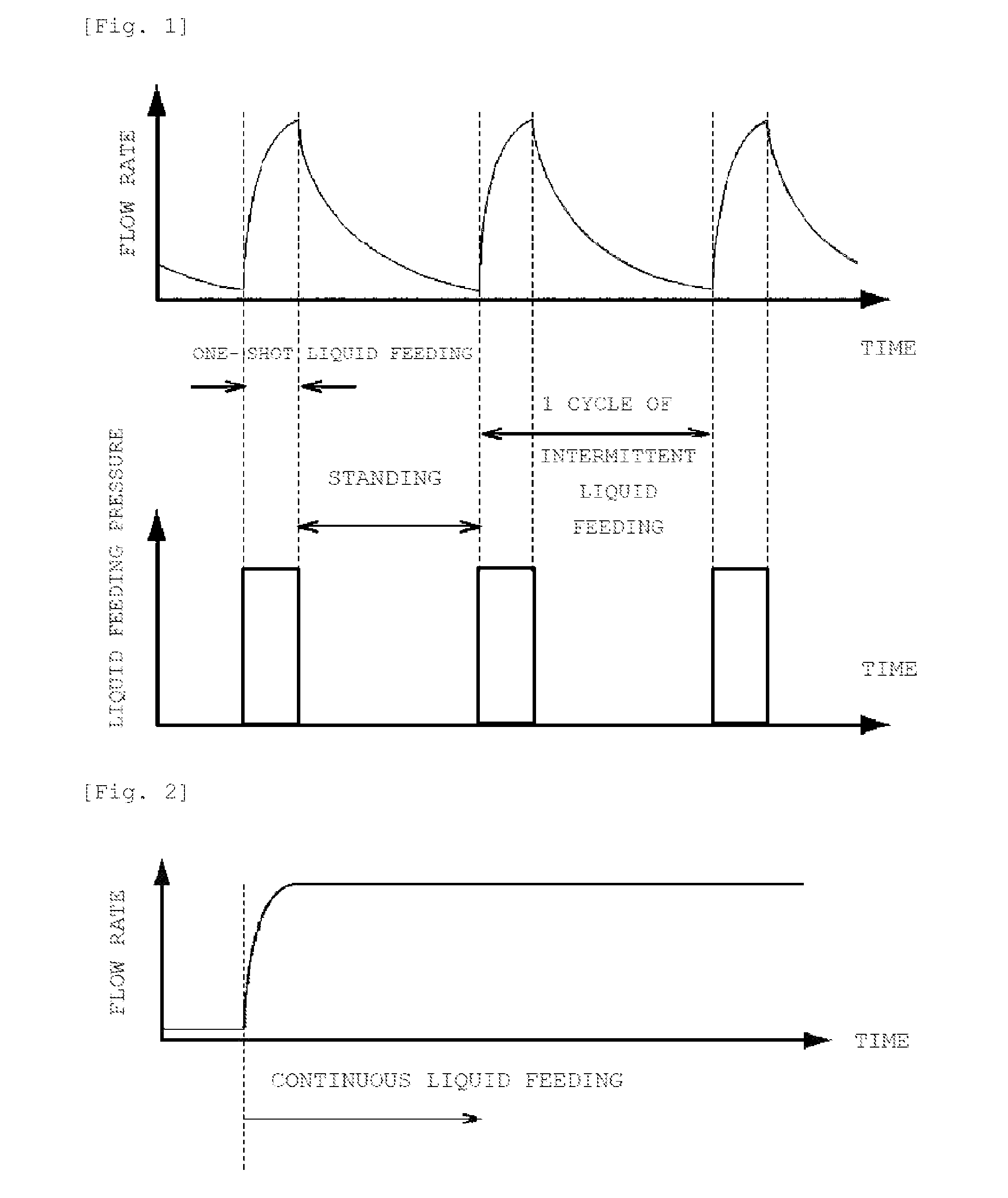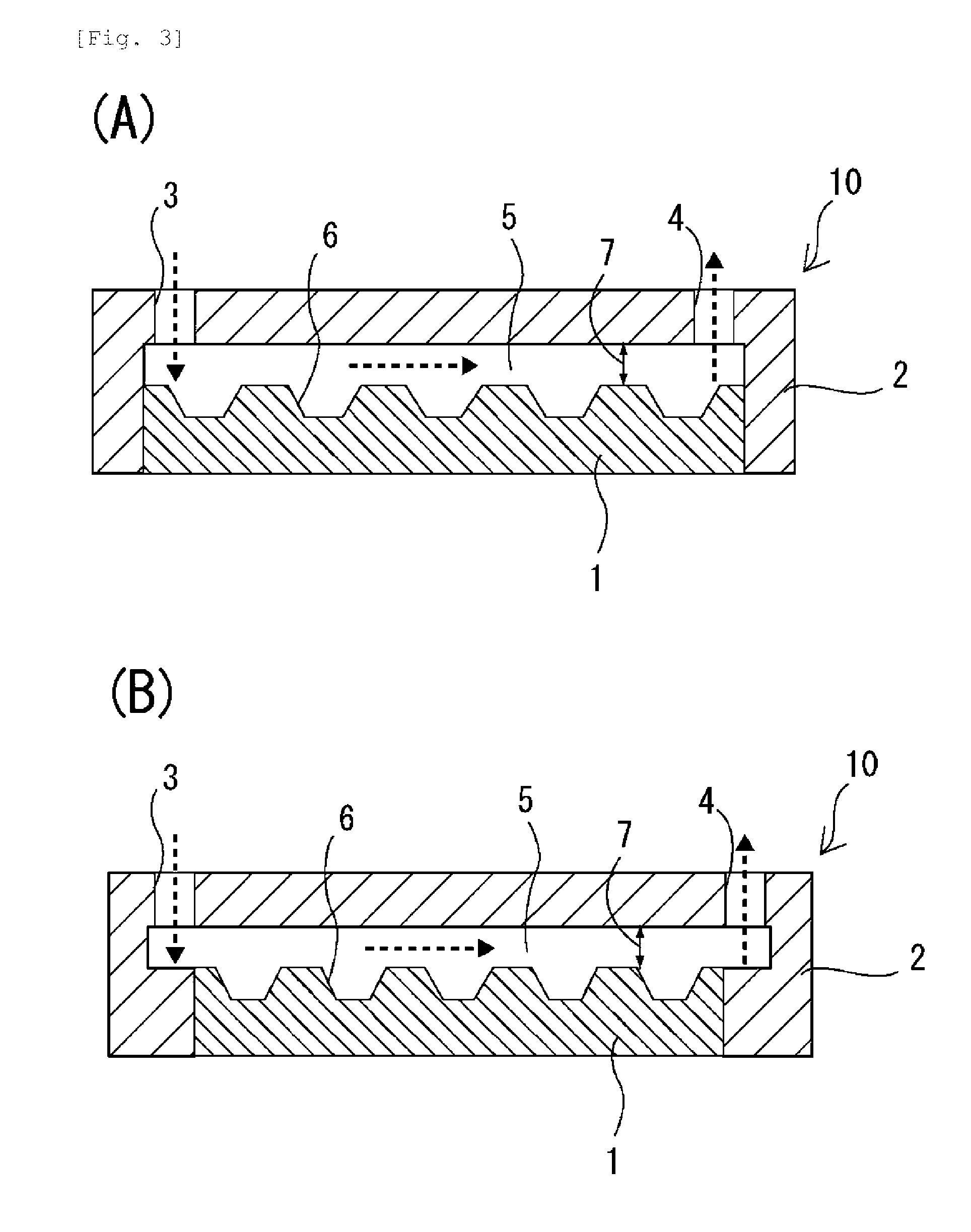Method for recovering rare cells and method for detecting rare cells
a rare cell and recovery method technology, applied in the field of rare cell recovery and detection, can solve the problems of insufficient cell recovery and extremely difficult detection, and achieve the effect of reducing the loss of rare cells that may exist in the cell suspension and high recovery ra
- Summary
- Abstract
- Description
- Claims
- Application Information
AI Technical Summary
Benefits of technology
Problems solved by technology
Method used
Image
Examples
example 1
[0132]As a microchamber chip, a chip on which microchambers of 100 μm in diameter and 50 μm in depth were arranged in a lattice form (the pitch, which is the distance between the bottom centers of adjacent microchambers, was 210 μm) was used. This microchamber chip was made of polystyrene and had a bottom-flat inverted conical shape.
[0133]On the microchamber chip surface on which the microchambers were formed, a polystyrene-made flow path-forming frame was arranged such that a flow path of 15 mm in length, 26 mm in width and 100 μm in height was formed, and the microchamber chip and the flow path-forming frame were integrated with each other. The flow path of the thus obtained cell-spreading device had a cross-section of 1.5 mm2 and a volume of 39 mm3 (=39 μL). As a liquid-feeding device, KDS200 dual syringe pump (manufactured by KD Scientific Inc.) was used.
[0134]On the flow path-forming frame, an inlet port and an outlet port were each formed in an integrated manner, which inlet p...
example 2
[0141]The step (Z) was carried out after the step (Y) of Example 1. That is, as the step (Z), 200 μL of PBS was continuously fed at a flow amount of 0.1 mL / min. As shown in FIG. 6, after the step (Y) of Example 1, the cells stored in some of the microchambers were in a layered form (FIG. 6(A); however, these cells were made into a monolayer by performing the step (Z).
example 3
[0142]After the step (Z) of Example 2, 200 μL of Hoechst 33342 stain was continuously fed at a flow amount of 0.1 mL / min. Three minutes later, the cells were observed under a microscope. The result thereof is shown in FIG. 7. This Hoechst 33342 stain was prepared by diluting “Hoechst 33342 10 mg / mL Solution in Water” manufactured by Molecular Probes Inc. in accordance with the manufacturer's instructions.
[0143]Although FIG. 7 shows only one microchamber, the number of stained cells corresponded to 90% of all cells introduced to the cell-spreading device.
PUM
 Login to View More
Login to View More Abstract
Description
Claims
Application Information
 Login to View More
Login to View More - R&D
- Intellectual Property
- Life Sciences
- Materials
- Tech Scout
- Unparalleled Data Quality
- Higher Quality Content
- 60% Fewer Hallucinations
Browse by: Latest US Patents, China's latest patents, Technical Efficacy Thesaurus, Application Domain, Technology Topic, Popular Technical Reports.
© 2025 PatSnap. All rights reserved.Legal|Privacy policy|Modern Slavery Act Transparency Statement|Sitemap|About US| Contact US: help@patsnap.com



